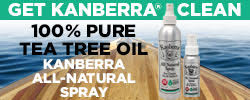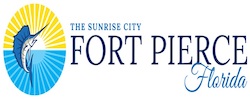Rebedding ,Sparring with Mother Nature – Janice Anne Wheeler
Your support is essential; it makes me proud to share these stories; what a joust! If you’ve just come aboard, accept my gratitude & please read SPARS & SPARRING, an intro to my world.  Messages reach my inbox directly; please do not hesitate to contact me! ~J
It’s not sexy; it’s not the morning-after-let’s-do-that- Google defines chainplate as “a crucial metal fitting on a sailboat that connects the standing rigging (fixed wires and ropes supporting the mast) to the hull. In essence, it acts as a strong anchor point for the shrouds and stays, which are the cables that, attached with turnbuckles, provide lateral and fore-and-aft support to the mast(s).” Admittedly, after due consideration, our chainplates are sexy in a classic wooden yacht, old-fashioned, pirate-ship sort of way. They have a notable exterior presence, considerable heft at thirty pounds or so, and you know the seriousness of their purpose. STEADFAST was originally designed by William Hand Jr as a Motorsailer with masts considerably shorter than they are today. Our friend Dmitri, who rebuilt her during the 80s, elongated the original spars by over 35%, changing the dynamics of the vessel tremendously. We harness the power of the wind to propel forty tons through the seas; the force of those opposing forces is tremendous. STEADFAST has sixteen exterior thirty-inch cast silicon bronze chainplates that are bolted through the hull into the structure of the vessel. Four of those attach two shrouds rather than one, giving us twenty separate opposing forces to keep the masts upright regardless of conditions. In speeds over gale force (35knots or 40mph or 65kph) we drop all but minimal sail because those forces are so extreme. The remaining sail is for stability rather than propulsion. She has proven herself and lived up to her name; we do our best to not encounter such conditions. Too little sail area may be slow, but too much sail area can be deadly. If you’re interested, you can explore the tragic sinking of the Pride of Baltimore through this link. The maintenance of chainplates is a key component to both integrity and strength; our favorite marine surveyor recommends rebedding every five to ten years. We knew we were overdue and started on those connected directly to the Mizzen, or aft, mast to discover that they had not been removed, cleaned, and re-adhered since their original installation nearly forty years ago. We also discovered why. The aft ones were challenging, with two-inch holes now needing repair were drilled through walls and small-hand dexterity was required. Our chainplates go underneath two sections of wood, the rub rail and the outer toe rail; it’s a feat to remove all the debris.  We put off the eight main mast ones as long as we could as most bolts were hidden behind interior walls. Rebedding hullside chainplates is a precarious, multi-step process that proves the tenacity of both marine adhesives (3M’s 5200) and our determination while depending on undependable weather forecasts not to get soaked to the bone or blown off the scaffold.
The bolts were installed prior to the galley. Yes, that’s new paint. Remember how interconnected a sailing vessel is and this one, while more complex than most, is far, far simpler than back in the days when it was the only mode of transport. On modern vessels a simple L-shaped piece of stainless steel bolted through the deck and into the interior structure is common. Find simple and detailed discussion here from No Frills Sailor. On STEADFAST, we don’t have the simple stuff. All that vessel REBEDDING tired us out, frankly, although crossing it off the list was a celebration. We’re hoping that when this project is completed we’ll have time and energy for the fun kind. ~J Think my work & project is worth sharing? We’ve been called “The Tally Ho of the Chesapeake Bay” more than once this week! Sampson Boat Co has 555,000 more followers than I do, so let’s get on it! Send me along!! No pressure, really. I’m just damn glad YOU are here. Have a wonderful week! Share SPARRING WITH MOTHER NATURE
THANK YOU AGAIN for supporting STEADFAST and her caretakers, mates! Saving history is not an easy task! © 2025 Janice Anne Wheeler |














Be the first to comment!